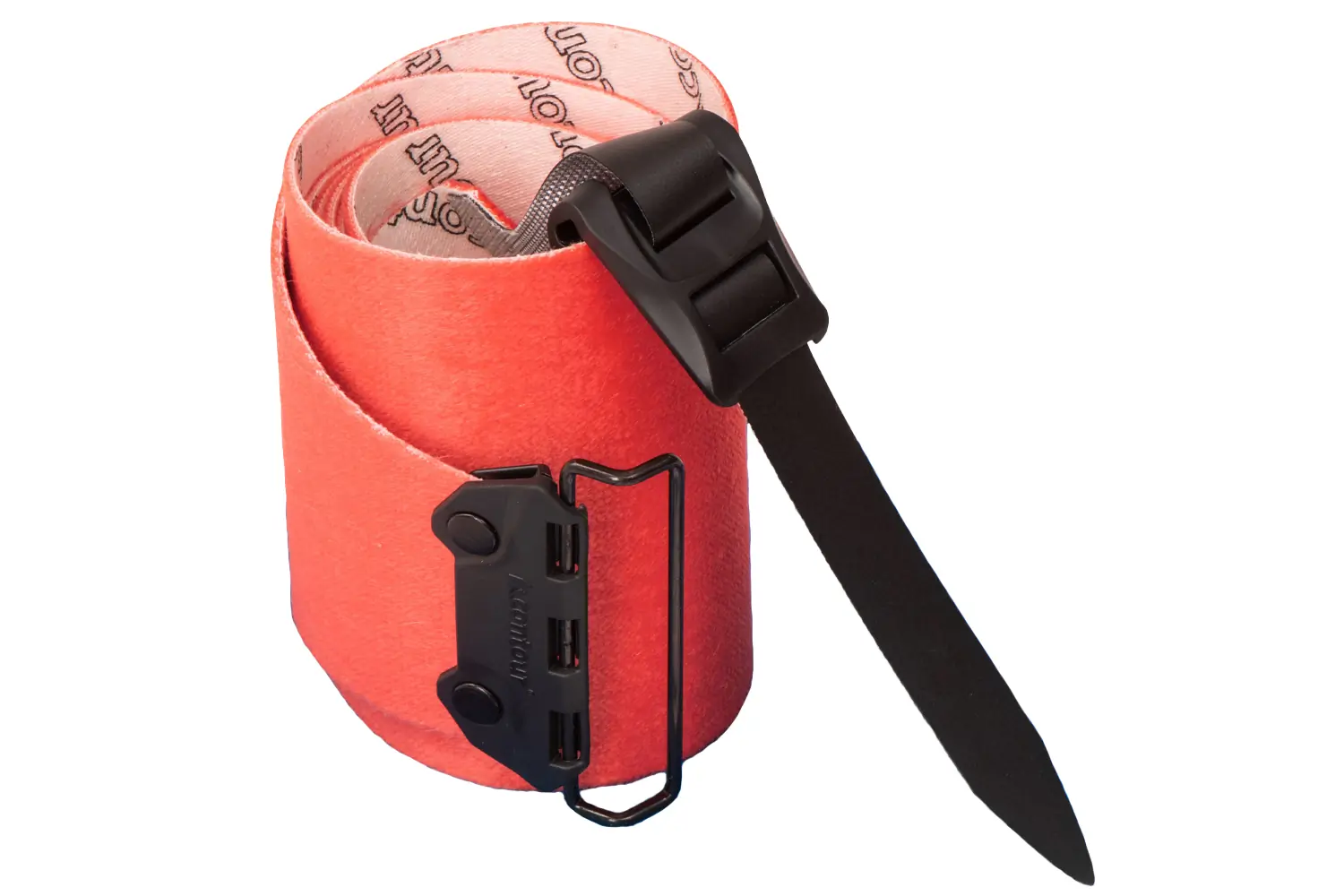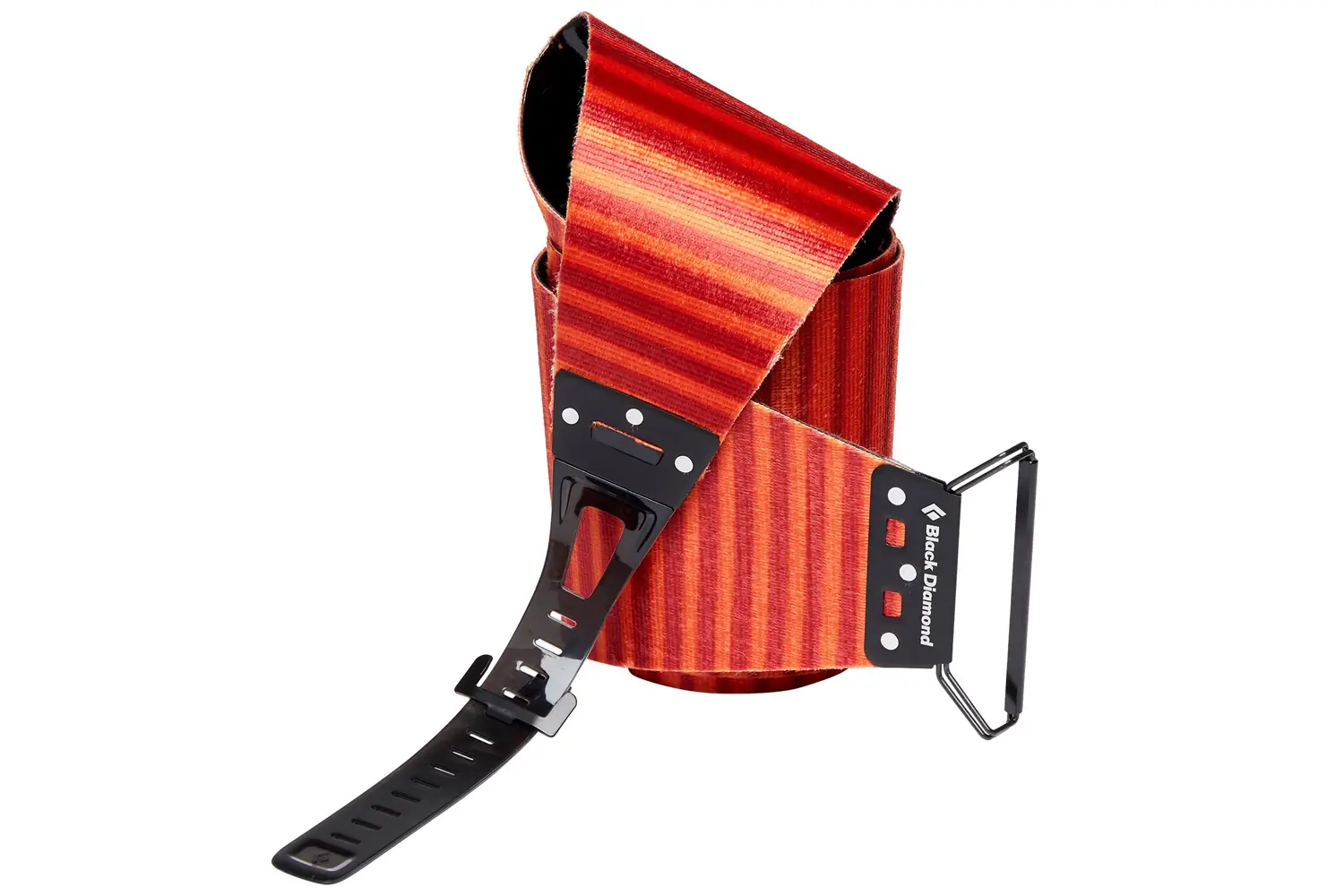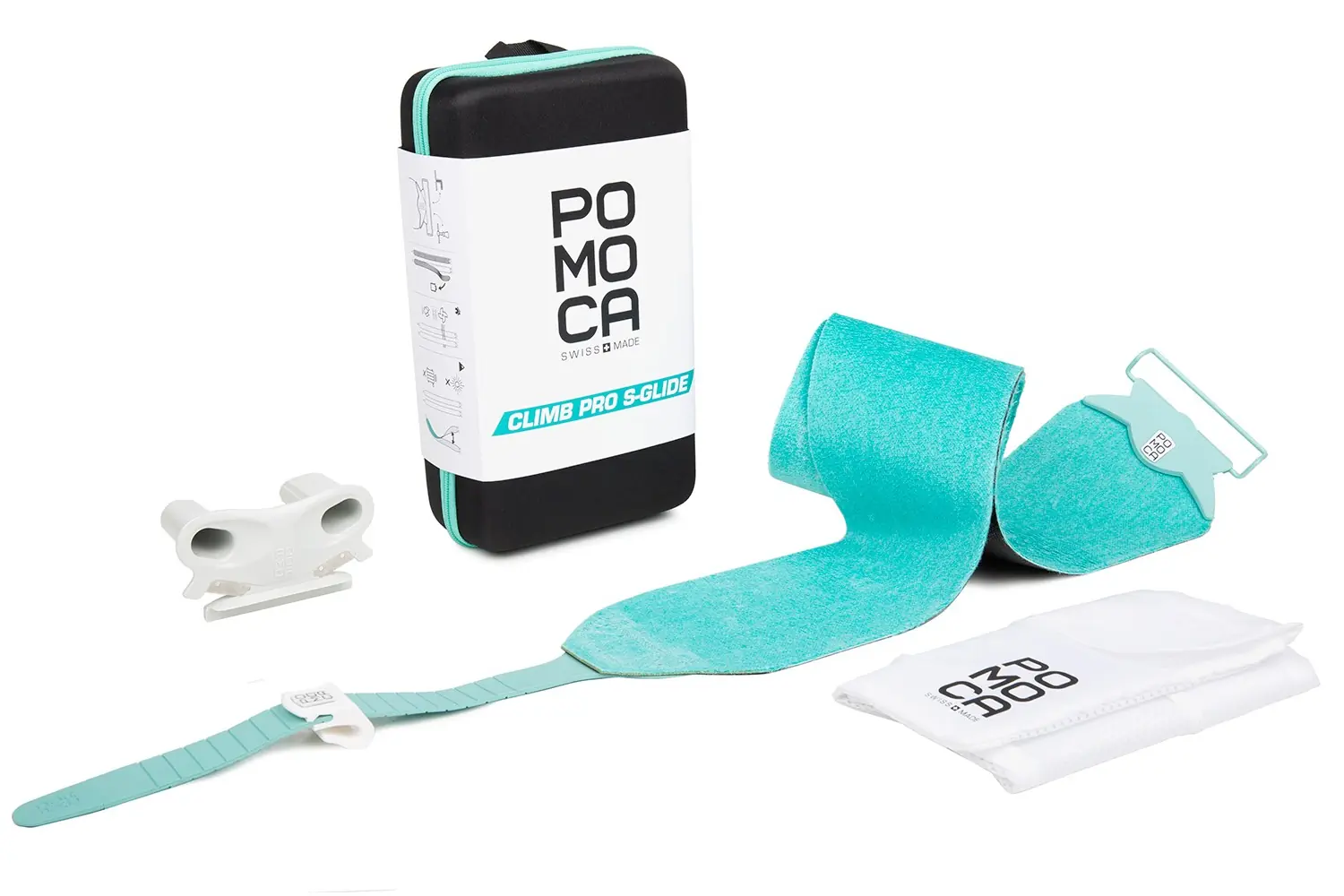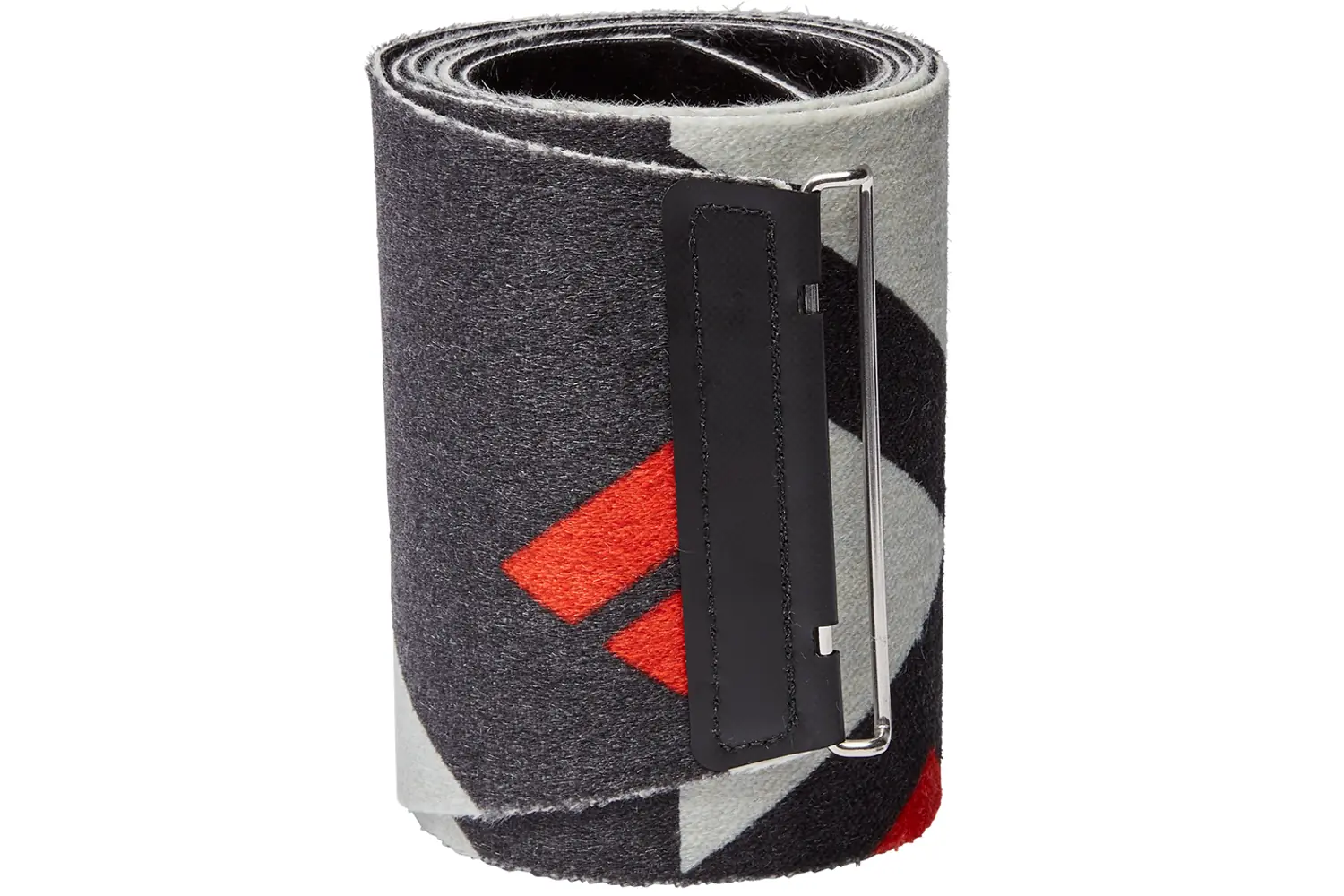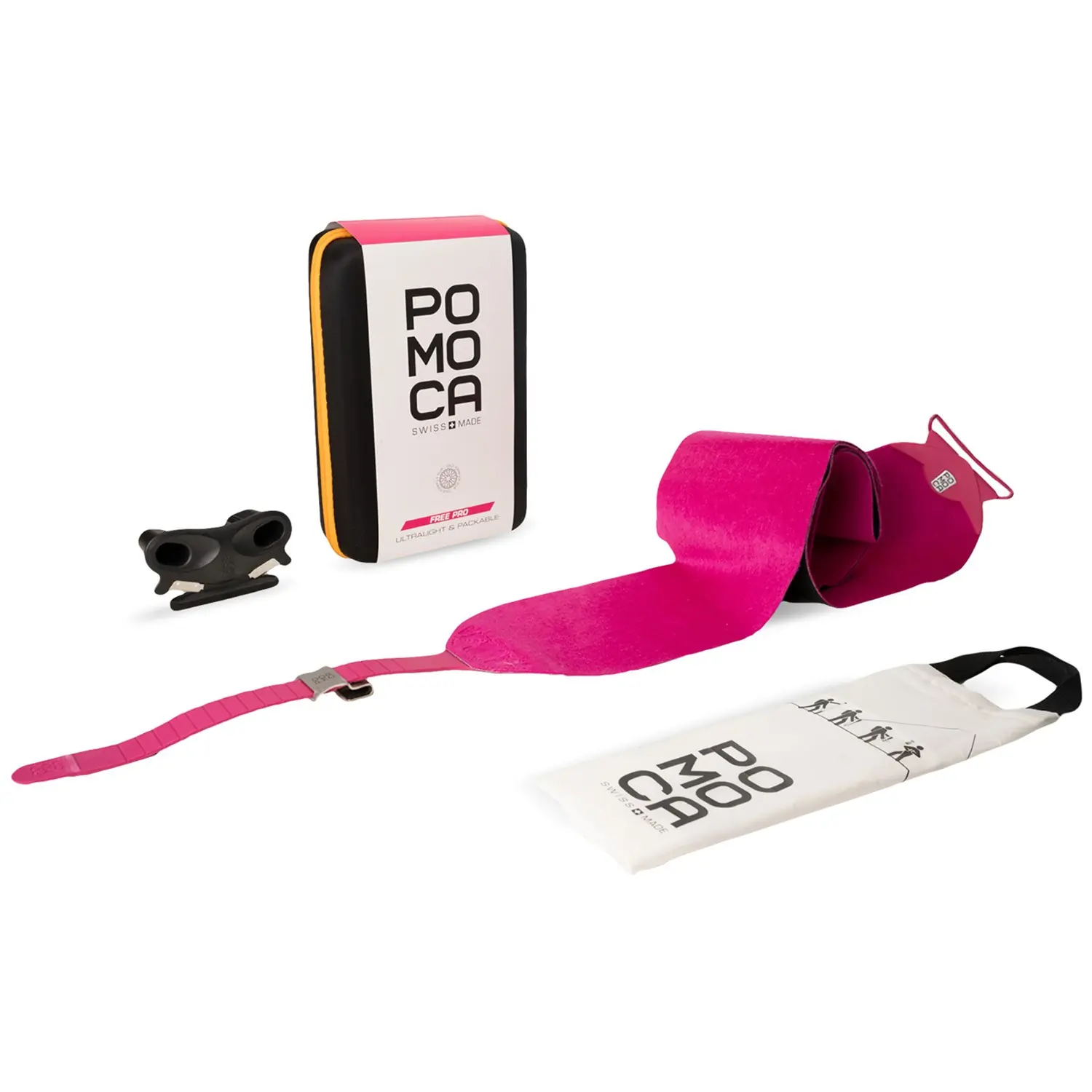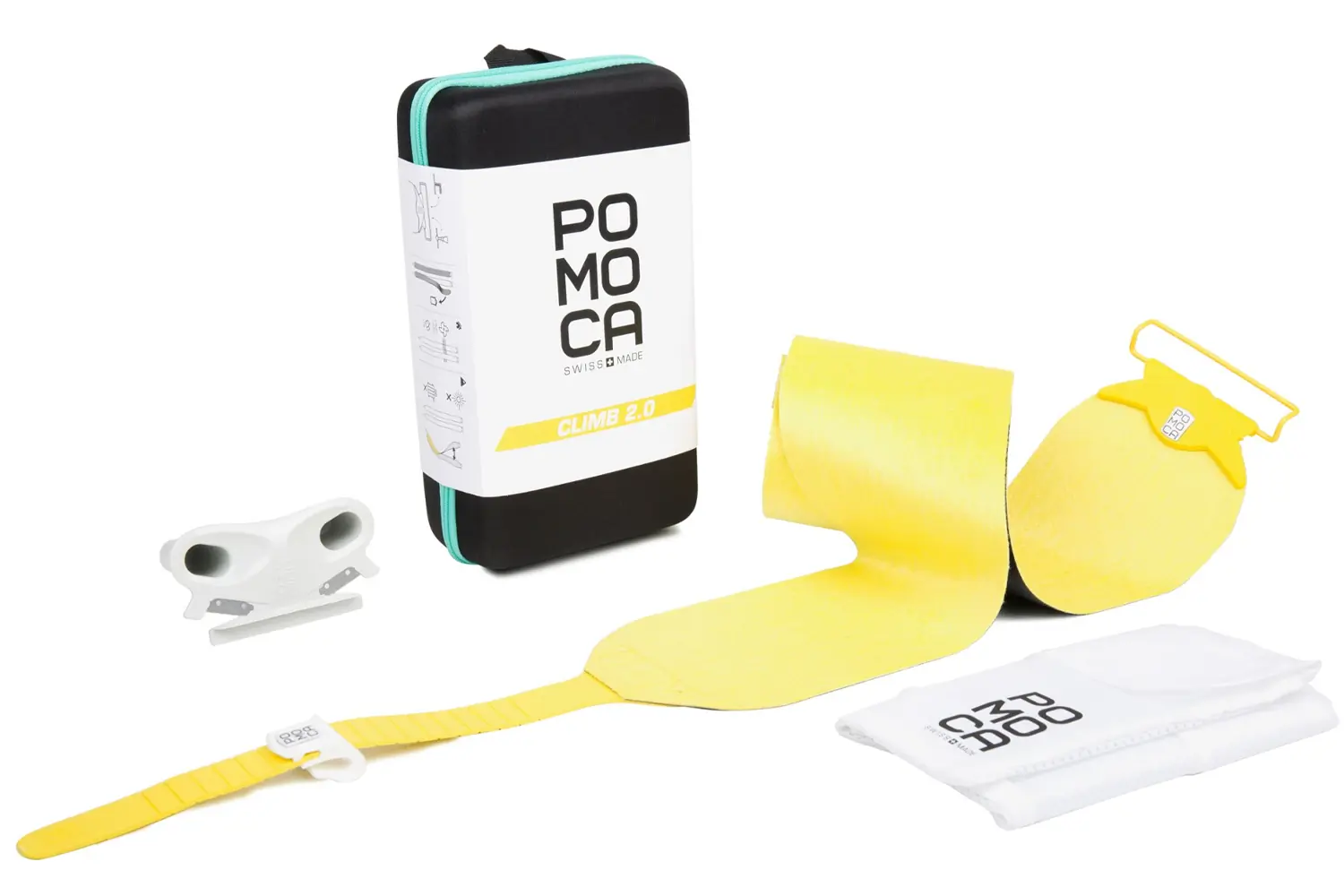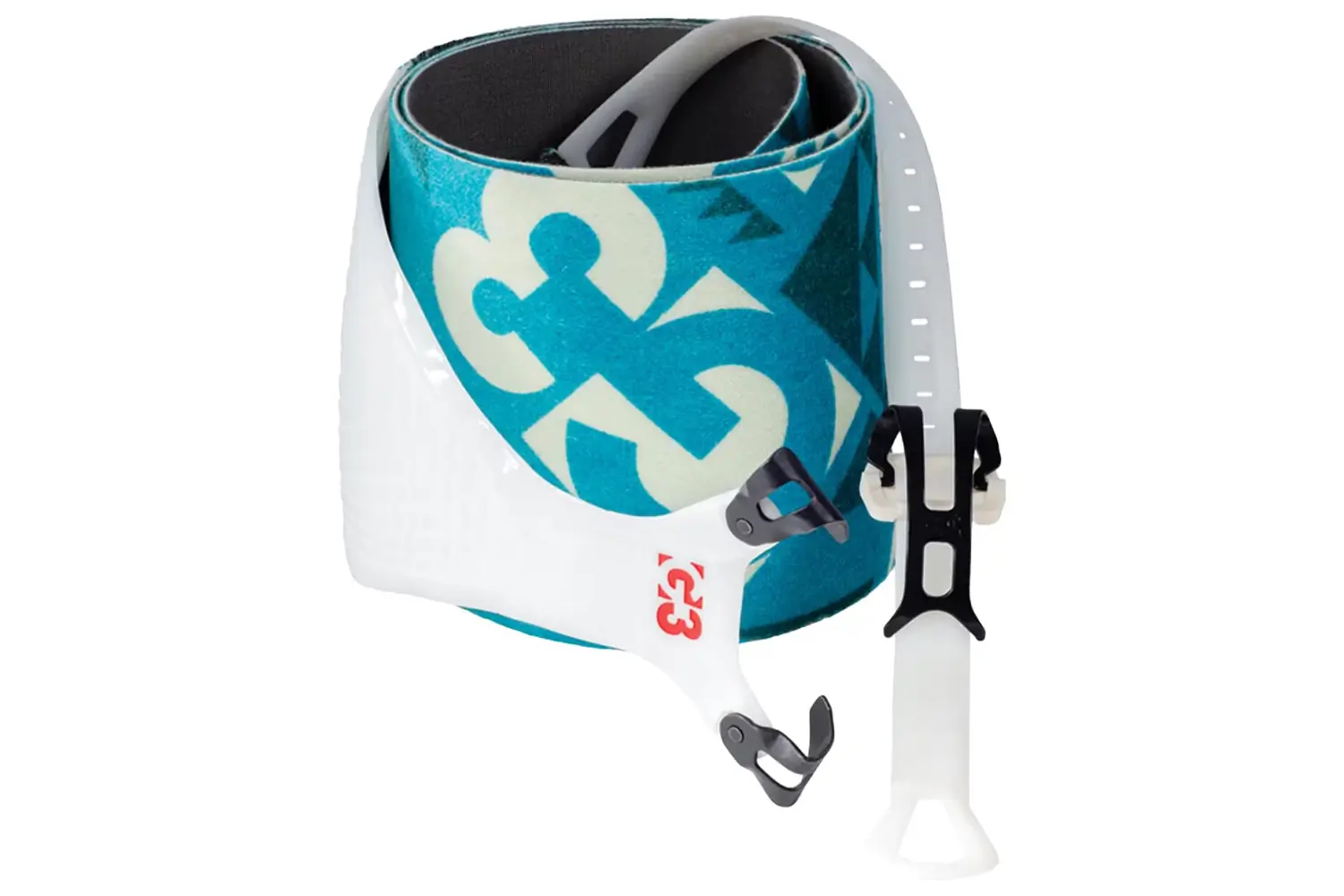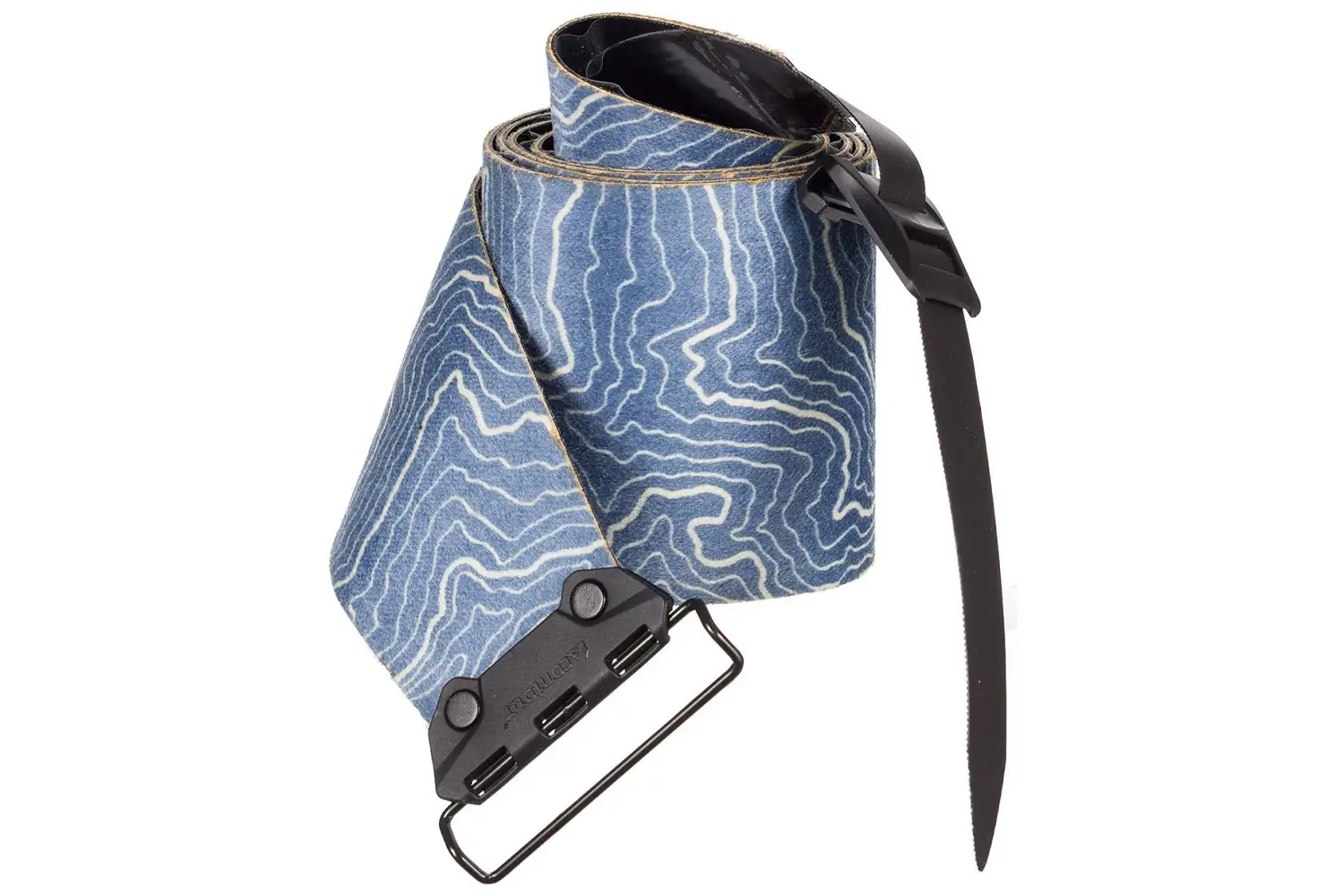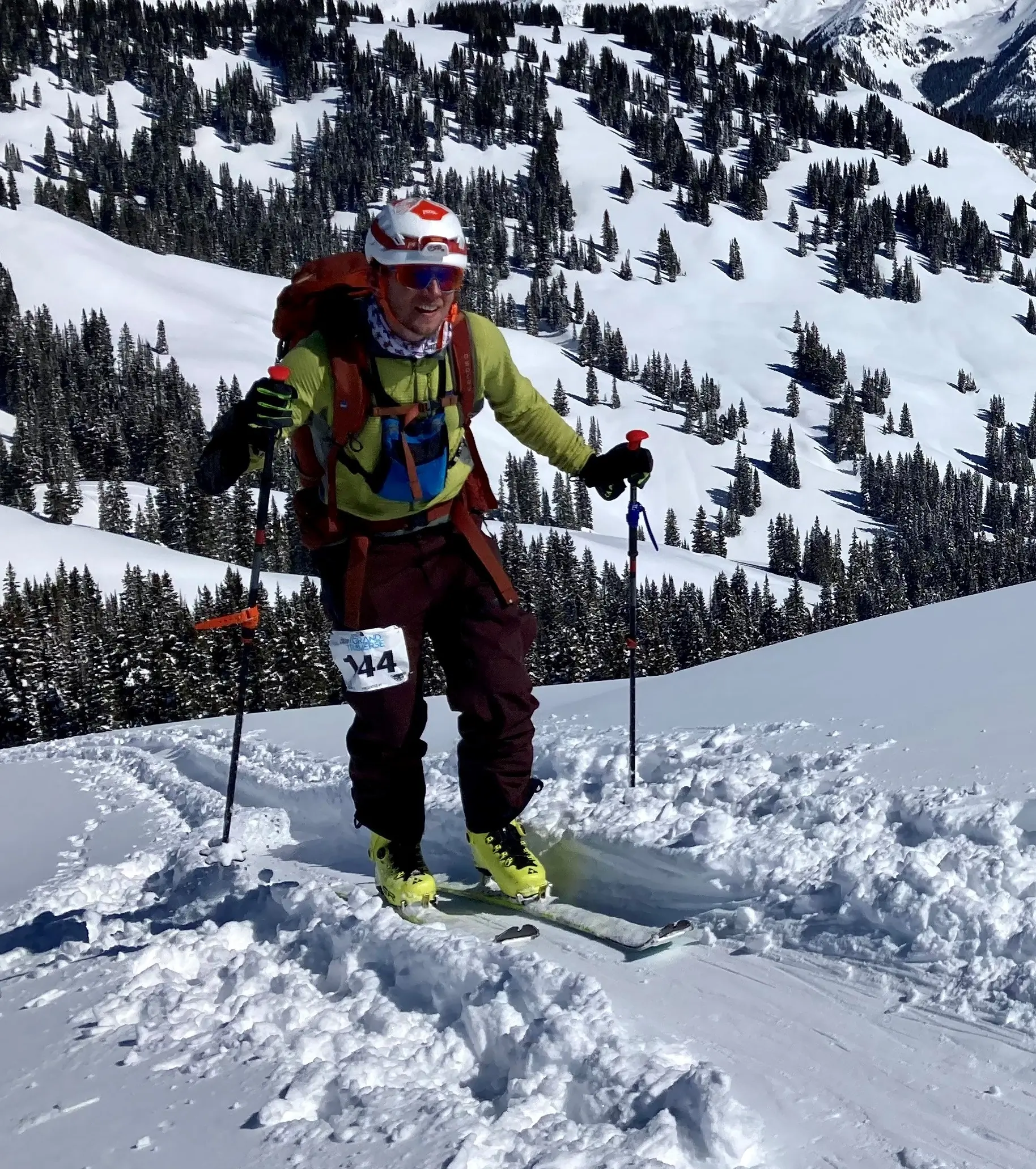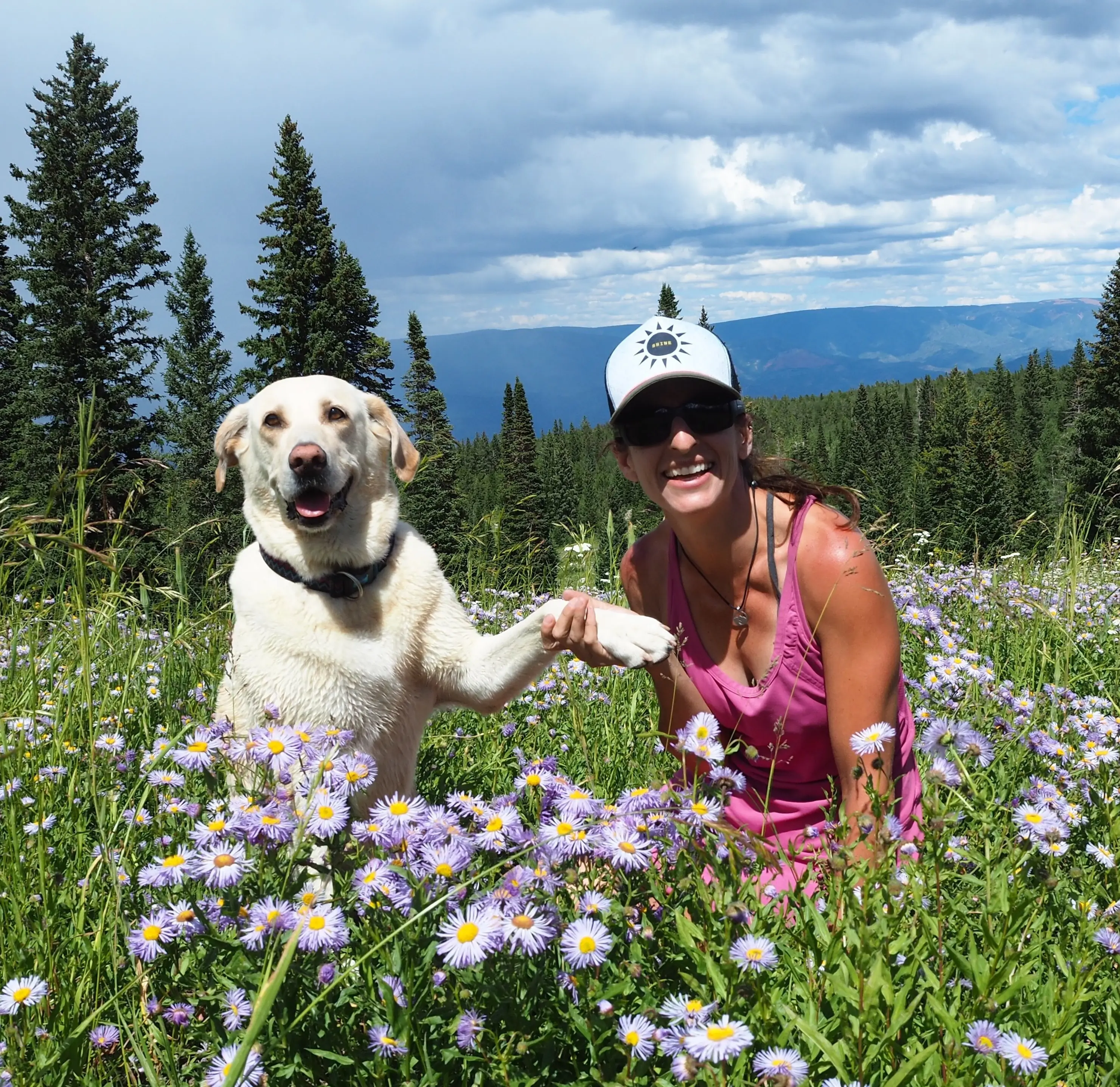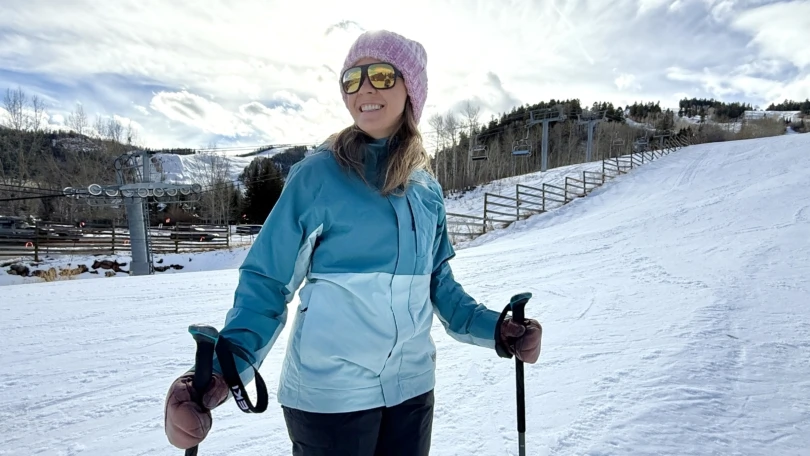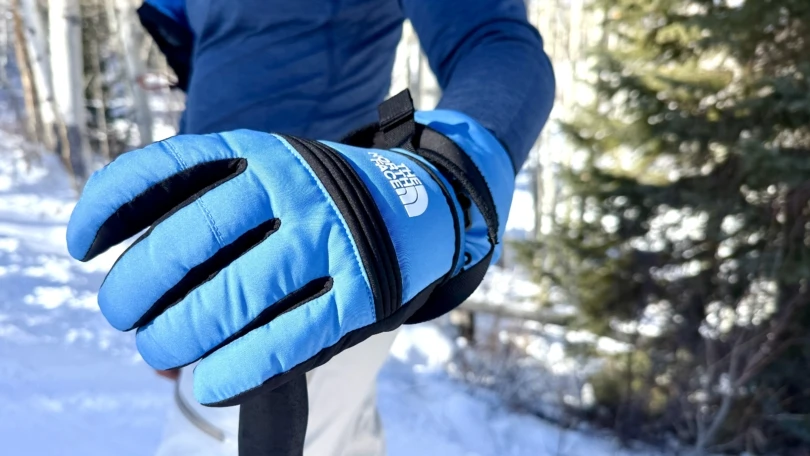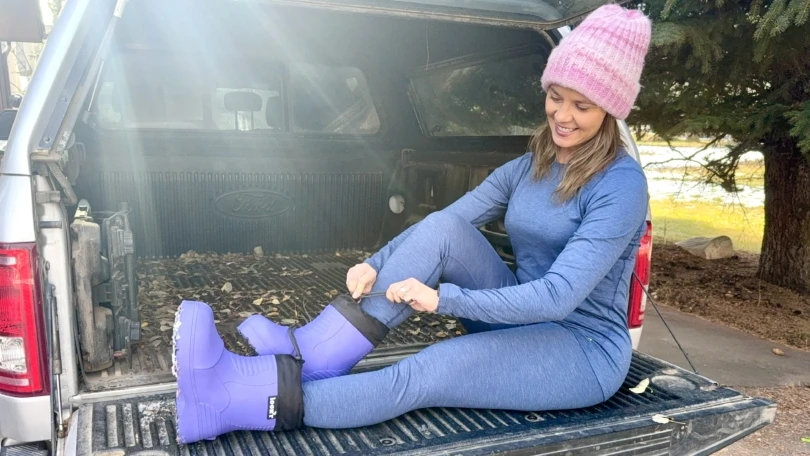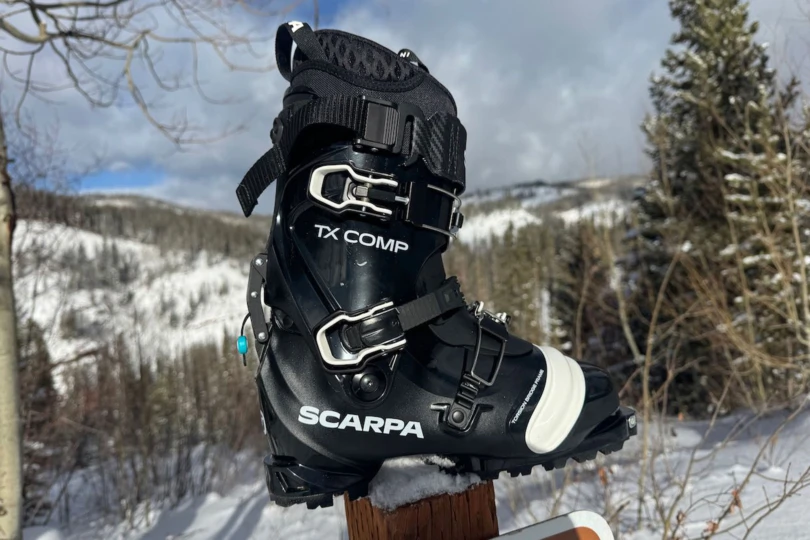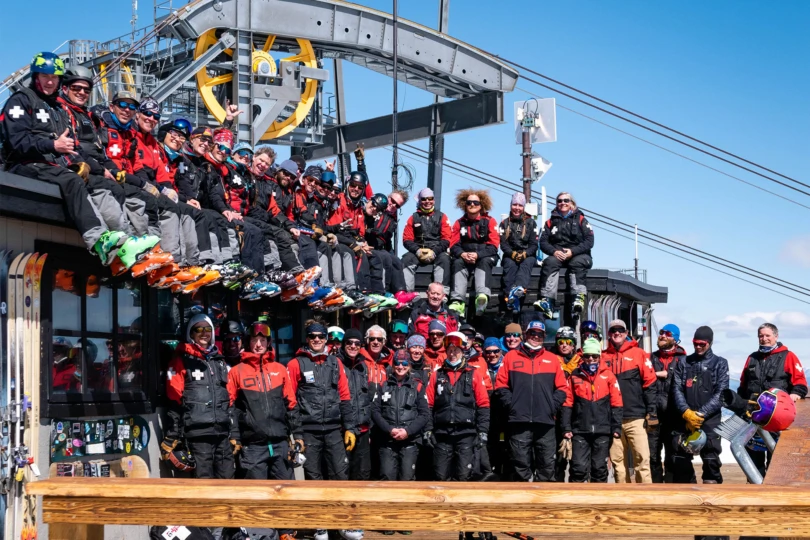Climbing skins can make or break your day in the backcountry, so it’s important that you have the best climbing skins to match your priorities. This may sound dramatic, but it’s true. Skins, strips of material strapped to the bottom of your skis to help you “ski” uphill, are a piece of gear you quickly forget about when they’re silently doing their job. But, when they’re failing, and you’re slipping backward, you immediately notice.
We’ve thoroughly tested seven of the best climbing skins to give you a deep dive into all the important details, including grip, glide, durability, glue, packability, and terrain/use. Whether you’re seeking the overall performance of the Contour Guide Pure or the value of the Black Diamond Ascension Nylon, we have you covered.
Lead tester Ryan Kempfer, a ski tech and an avid skier who’s skinned over 100+ days per year for the past decade, put these skins through the wringer. With help from GearJunkie editor Chris Kassar (also a huge backcountry enthusiast), we tested these skins throughout Colorado’s Rocky Mountains and Wyoming’s Teton Range to see how they stacked up when pushed to the limits in varied snow, weather, and terrain.
Editor’s Note: We updated this buyer’s guide on February 14, 2025, with the Pomoca Free Pro, our top pick for moving fast through the mountains.
The Best Climbing Skins of 2025
Top Picks
Contour Guide Pure
- Materials: 100% Mohair
- Width: 115, 135 mm
- Weight: 8 oz.
Pros
- Lightweight
- Glue-based means they stick to skis well
- Packable
- Performed well in all kinds of snow conditions, from cold ice to spring slush
Cons
- Tail attachment rips off after many uses
Black Diamond Ascension Nylon
- Materials: Nylon
- Width: 133 mm
- Weight: 1 lb. ,10 oz. (169-180 cm)
Pros
- Glue-based for ultimate stickiness to skis even in super cold temps
- Riveted tail attachments for durability
- Heavy-duty hardware means worry-free fun
- Tried and true/the skin that started it all
Cons
- Heavy
- Bulky
Pomoca Tour Pro
- Materials: 65% mohair, 35% nylon
- Width: 100, 120, 140 mm
- Weight: 7.8 oz. (120)
Pros
- Perfect combination of grip and glide
- Moisture barrier keep skins from getting soaked through
- Stick very well to your skis even in the cold
Cons
- Tail attachment durability is questionable
Black Diamond Glidelite Mix STS
- Materials: 65% Mohair, 35% Nylon
- Width: 110mm-135mm
- Weight: Not reported
Pros
- Great performance climbing and gliding
- Durable tip attachments (riveted) onto skin
- Bomber glue means skins stick to skis no matter the temps or conditions
- Fixed lengths available (quick width trim and go)
Cons
- Riveted tip attachment offers less packability and adds weight
- New STS tail attachment durability is questionable
- Hard to rip apart (but glue never really fails)
Pomoca Free Pro
- Materials: 65% Mohair / 35% Nylon
- Width: 123, 140 mm
- Weight: 7.7 ounces (123 mm)
Pros
- Packable
- Lightweight
- Ultimate glide
- Improved tail clips
- Perform well in a range of snow & weather conditions
Cons
- Tail attachment durability is questionable
- Slight compromise on grip
More Great Climbing Skins We Tested
- Materials: 70% mohair/30% nylon
- Width: 100, 120, 140 mm
- Weight: 7.6 oz.
Pros
- Lightweight
- Packable
- Affordable
- Many lengths offered
Cons
- Average performance, doesn’t excel at any one thing
- Tail attachment durability is questionable
- Materials: 70% mohair, 30% nylon
- Width: 100-145 mm depending on length
- Weight: 9.3-12.3 oz. (172-88 cm)
Pros
- Ultimate grip and durability
- Innovative tip to offer minimal snow creep
- Elongated rubber tail attachments for ease of ripping and maximum strength and longevity
- Range of length and width available at purchase offering minimal waste
Cons
- New plastic tip attachment adds excessive bulk
- Concerned over the cold brittle feel of the tip attachment on chilly days
- Top sheet mounted tail connectors don’t last
- Materials: 65% Mohair / 35% Nylon
- Width: 115, 135 mm
- Weight: 1 lb. 6 oz (115 mm)
Pros
- Easy to handle and rip
- Lightweight
- Packable
- Great glide
- Easy to clean and refresh
Cons
- Skins lose stickiness/slip off at cold temps or after multiple rips in the same day
- Require extra care and vigilance when putting on skis
Climbing Skins Comparison Chart
| Climbing Skins | Price | Materials | Width | Weight |
|---|---|---|---|---|
| Contour Guide Pure | $200-220 | 100% Mohair | 115, 135 mm | 8 oz. |
| Black Diamond Ascension Nylon | $190 | 100% Nylon | 133 mm | 1 lb., 10 oz. |
| Pomoca Tour Pro | $230-260 | 65% Mohair, 35% Nylon | 100, 120, 140 mm | 7.8 oz. |
| Black Diamond Glidelite Mix STS | $210-220 | 65% Mohair, 35% Nylon | 110mm-135mm | Not reported |
| Pomoca Free Pro | $250-260 | 65% Mohair / 35% Nylon | 123, 140 mm | 7.7 oz. (123 mm) |
| Pomoca Climb 2.0 | $200-220 | 70% Mohair/30% Nylon | 100, 120, 140 mm | 7.6 oz. |
| G3 Alpinist + Glide | $211-229 | 70% Mohair, 30% Nylon | 100-145 mm | 9.3 oz.-12.3 oz. |
| Contour Hybrid Mix | $200-220 | 65% Mohair, 35% Nylon | 115-135 mm | 1 lb., 6 oz |

How We Tested Climbing Skins
As backcountry addicts, we completely understand the varied demands of backcountry skiing. We also know that your boots are perhaps the most important piece of gear (other than your avi and safety gear) you’ll take with you. If they don’t fit or perform well, an epic pow day can turn into a terrible one pretty fast.
We put in months and months of time in the best backcountry ski boots on the market so you don’t have to. Our recommendations take out the guesswork so you can get on the snow faster and with less effort.
Our Expert Testers
At 18, Ryan Kempfer moved from Wisconsin to Steamboat Springs, where the mountains — and skiing — captured his heart. Since then, the places he’s traveled — from Grand Teton to Great Sand Dunes National Park and many spots in between — have brought great adventures on skis, bikes, and by foot.
For over two decades, Ryan worked in the ski industry, first working his way up to a base services manager at a ski resort and then as a boot fitter and a ski tech in a backcountry-focused ski shop where he helped people find the perfect gear for their adventures.
Now, he works as a wildlife guide in Grand Teton and Yellowstone National Parks. But, when he’s not out guiding or writing about the latest outdoor gear, he’s out using it. He skis over 100 days yearly, mainly in the backcountry, so he knows what works and what doesn’t. And, he loves hucking off of rocks, dropping into steep couloirs, and pushing his limits by skiing hard.
GearJunkie editor Chris Kassar, a backcountry skier who first started on telemark gear over 20 years ago and reluctantly (but gratefully) transitioned to AT 4 years ago, also assisted in testing. She, however, is a bit more of a tentative skier who really loves the uphill part and appreciates powder days and mellow slopes. Having two wildly different perspectives and ski styles helps give our reviews a wide perspective sure to help skiers from beginners to experts.




Our Testing Grounds & Process
We’ve put these climbing skins to the test by heading into the backcountry — a ton. We went uphill and down in every type of terrain and all snow (and ice) conditions that nature could throw our way. From skinning up mellow open glades to climbing steep couloirs, from skinning in feet of fresh powder to climbing up pure ice, from the Tetons to the Rockies, and everything in between, we gave it a go with these skins to get all the info you need to decide which ones will work best for you.
These climbing skins carried us through steep uphill dawn patrols at Monarch Mountain Resort and Snow King Mountain, long, all-day tours in the Tetons, remote hut trips in the Colorado Rockies, and up a few peak summit missions in the Sawatch Range.
While testing the best climbing skins, we considered grip, glide, packability, durability, and more. We thought about what type of skier and conditions are best for each skin.
We pushed these skins (and will continue to do so over the next couple of seasons) to further evaluate their durability and their ability to weather wear and tear. We used them in a range of temperatures, from 20 below freezing in January to warm spring days in May and June.
Once you find the ideal climbing skin for your needs, be sure to consult our guides to the best backcountry ski boots, best backcountry ski bindings, and best backcountry skis to round out your setup.




Buyer’s Guide: How to Choose the Best Climbing Skins
Which skin you choose will depend on your priorities, the type of skiing you do, and the kind of terrain you tackle. It’s important to consider grip, glide, glue type, durability, packability, and value
Grip
You can ski uphill (also called skinning) because the tiny hairs of the skin (aka plush or carpet) grip the snow as you glide your ski across it. Grip varies based on the material type used and the fibers’ length. Skins are commonly made of nylon, mohair, or a blend of both in varying amounts.
Mohair has shorter fibers so it glides better and grips less. Nylon has longer fibers, so it grips better but glides less easily. Typically, skins that offer the best grip don’t glide as well. However, the compromise may be worth it if you often tackle steep or icy terrain.
How grippy your skins are will determine how you set your skin track. If you’re in steeper terrain, grip will help you determine how far you can go without carrying your skis while post-holing in a boot pack. Grip, along with glide, also determines your efficiency. Because if you keep backsliding, you’ll be less efficient. If grip is most important to you, choose a skin made of 100% nylon, like the Black Diamond Ascension Nylon skins.




Glide
Being able to cruise through mountains efficiently in winter is one of the most amazing parts of ski touring. To fully enjoy it, glide is important. As they say, “The quicker the glide, the more efficient the stride.” The material comprising the plush of the skin you choose, will change the glide. More mohair means better glide. More nylon means less glide. Glide helps skin more efficiently on both flat and steep terrain.
Sliding your ski across the snow as you move forward (rather than lifting your feet as if you are walking) conserves critical energy on backcountry missions. Choose 100% mohair like the Contour Guide Pure for the smoothest glide. The Pomoca Free Pro skins combine mohair and nylon in a lightweight package that also glides smoothly.
Choose a blend like the Pomoca Tour Pro if you want one that falls in the middle of both grip and glide. No product nails them both perfectly, and so the search for the holy grail, a skin that delivers the ultimate balance between grip and glide continues.
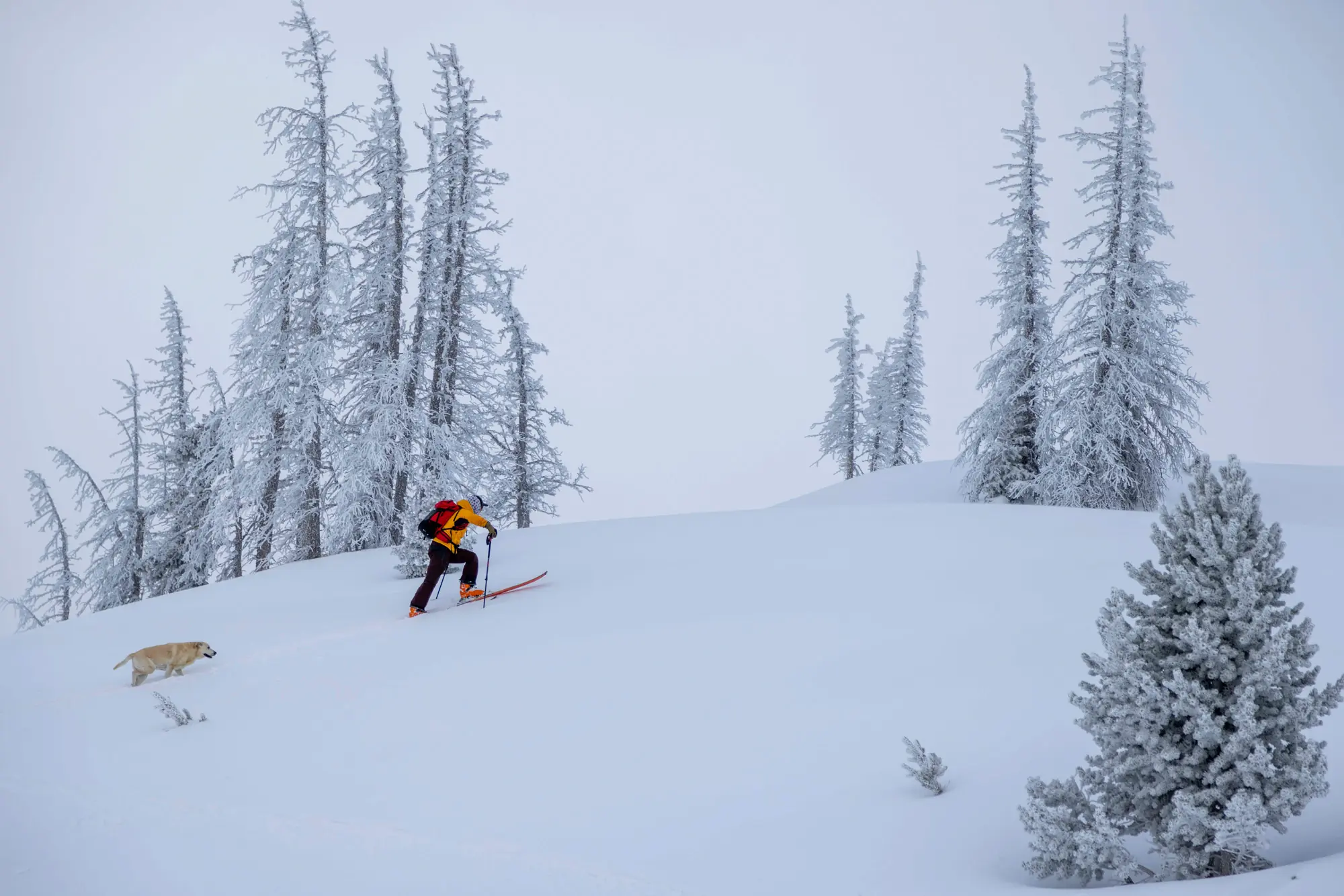



Packability
As mentioned earlier, it is not only about the plush that you choose for your skin. The tip and tail attachments also play a role in how small your skins can pack down. A 100% nylon skin with riveted attachments will give you years of use and amazing grip, but it folds and rolls poorly.
Softer skins like a mohair/nylon blend will better roll or fold into a smaller package. However, even a blend like the G3 Alpinist + Glide with bulky attachments will not be extremely packable.
If packability is extremely important, consider a different type of skin. The most packable we tested are the Pomoca Free Pro, Contour Guide Pure and the Contour Hybrid Mix. However, again, this is in part due to the fact that these skins heat-weld their tail attachments, which is a brilliant idea when it comes to packability but not the most durable option.
The Black Diamond Glidelite Mix STS used to have riveted tail attachments, but the redesigned version has sewn tail attachments, adding slightly to packability, but making us wonder about reliability over the long term.
Think of consistently pulling on a strap in cold weather and it will inevitably come off your skin. And, we don’t know about you, but as backcountry skiers, durability always plays a bigger part than weight and packability because if your skins fail when you’re way out in the mountains, you’ll have a bigger problem than a couple extra ounces.




Glue Type & Ability to Stick to Skis
An adhesive applied to the non-plush side of your skins make the skins stick to your skis. Some adhesives are glue-based, and some are silicone-based.
Glue-based adhesives will work better in a wider range of temperatures so they will stick to your skis when it’s frigid. They’re also more forgiving if there is a little ice or snow on your ski base when you put your skins on. (Note: You should always try to clean your skis as well as possible before putting skins on).
Our top five picks, the Contour Guide Pure, Pomoca Tour Pro, Black Diamond Ascensions, Pomoca Free Pro, and the Black Diamond Glidelite Mix STS are all glue-based for these reasons. These are solid choices if you like to ski in cold temps, stormy conditions and fresh pow. (Duh! Who doesn’t want to ski in these conditions?)
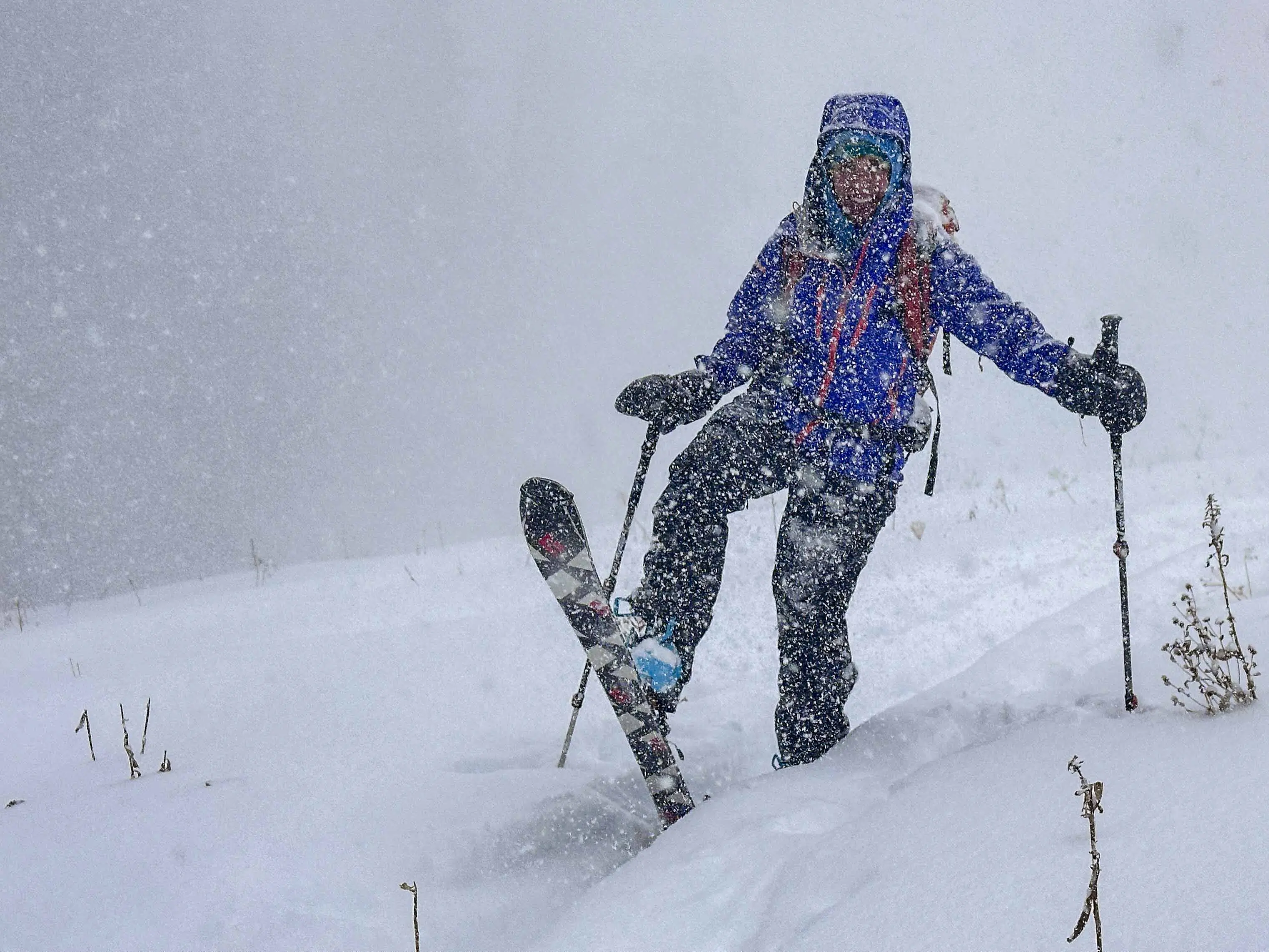



Non-glue adhesives, like those in the Contour Hybrid Mix, are much more temperamental. In fact, not many skins on the market are made with non-glue adhesives, most likely because of their unreliability. They can fail in colder temperatures, leaving you stranded or, at the very least, frustrated.
Regardless of type, skin adhesive changes over time. Some skins become less sticky, while others develop little balls of gummy glue. As skins age, it may also begin to leave glue behind on your ski. Some of these changes involve time and use, but storage and treatment are also important.
Try to keep skins clean and away from debris like pine needles, dog hair, and dust that can build up on skins and impact the glue. Also, consider how skins impact your skis; multiple rips of glue-based skins will require a lot more ski maintenance (i.e., waxing) because glue pulls wax out of your skis, whereas a non-glue adhesive won’t do that.




Durability
Consider the material of the plush, the hardware used to connect the tip and tail to the ski, and the durability of the glue (see above). Nylon fibers offer ultimate durability, while mohair fibers are finer and lighter. And, therefore, more delicate and less durable. The thickness of plush can also vary from skin to skin. Those with thicker plush tend to be more durable and longer lasting than thinner plush.
If every ounce matters, you’re probably going to have a less durable skin. Black Diamond skins stand out because they use metal clips and a rivet to secure attachments at tip and tail. This makes skins like the BD Ascension Nylon much more durable than others who sew or weld with hot glue.
The more you pull your tail clip (i.e., multiple rips), the more likely it will come off when not riveted. We experienced this exact issue with the Contour Hybrid Mix, which is the least durable skin we reviewed overall.




Price & Value
When it comes to climbing skins, discussing price and value is a bit trickier than other ski gear since there isn’t a ton of variation in price among products. While top-tier backcountry skis can be almost double the price of budget options, the skins reviewed here only vary in cost by $50 since they range from $190 to $240.
And, these prices do not even indicate quality since every size (width and length) configuration of the same skin will have a different price. When it comes to climbing skins, price is not as much a reflection of performance as it may be when comparing other technical products like skis, boots or bindings.
Thus, when considering price and value in skins, it’s important to be sure you’re comparing the same size and length and, more importantly, to consider durability, performance, and how you will use them. Since the skins we’ve reviewed only vary in price by a small percentage, it doesn’t make sense to break them down into budget, mid-tier and premium categories like we have in other buyer’s guides.
If you’re looking for a reliable skin that will last, consider our “best budget option,” the BD Ascension Nylon. Unlike all the other skins on our list, the price of these skins is the same regardless of the length you choose, so you don’t get dinged for having longer skis.
Our best overall skins, the Contour Guide Pure ($200-220), only cost slightly more, and they are by far the best skins we’ve ever used because of their reliability and ability to excel in all conditions. As for the priciest on our list, our favorite hybrid mix, the Pomoca Tour Pro ($230-260), offers the ideal balance between grip and glide and has a moisture barrier to prevent snow build-up.




Frequently Asked Questions
Before you attach your skins to your skis, wipe down your ski bases. Make sure they are completely free of snow, ice, and dirt. Apply your skins from tip to tail, ensuring that the tail doesn’t come in contact with anything, like snow. Make sure the skins stick evenly to the entire ski surface. Once completely attached to the base, press the skins down to make sure they stick well.
While skiing, keep an eye on your skins to make sure you don’t kick your tails off. Be sure no snow is getting under the skin (known as snow creep). A properly cut skin should minimize this problem. When you remove the skins at the top of your run, keep them as snow-free as possible.
Fold each skin glue-to-glue. Keep them as centered and lined up as possible so that no glue is exposed. Otherwise, it will collect lint, dog hair, or snow. Store them in your jacket, pocket, or pack while skiing down.
When you get home, with the skins still folded in half (glue to glue), drape them over a chair or hook. Allow to dry for a couple of hours at room temperature (away from any open heat source). If you’re going to use them the next day, leave them as they are.
If you’re putting your skins away for longer, let them dry. Pull them apart. Put the skin saver back in, and fold them back glue to glue with the skin saver now in between, creating a barrier between the glue. Roll them up and keep them stored at room temperature.




When choosing climbing skins, consider the balance between mohair and nylon. Mohair provides excellent glide in dry conditions but lacks durability. Nylon offers superior grip and durability in variable or wet snow. Blended skins, combining mohair and nylon, aim to offer a compromise between the two. It’s essential to prioritize your specific backcountry skiing needs and preferences when selecting the best material for climbing skins.
Measure the widest part of your skis, usually at the shovel (tip). The skins should be equal to or slightly wider than this measurement for full coverage and maximum traction. Most manufacturers offer skins in various widths, and many can be trimmed to fit the exact shape of your ski. Choose a width that covers the entire ski at its widest point and can be trimmed for a precise fit.
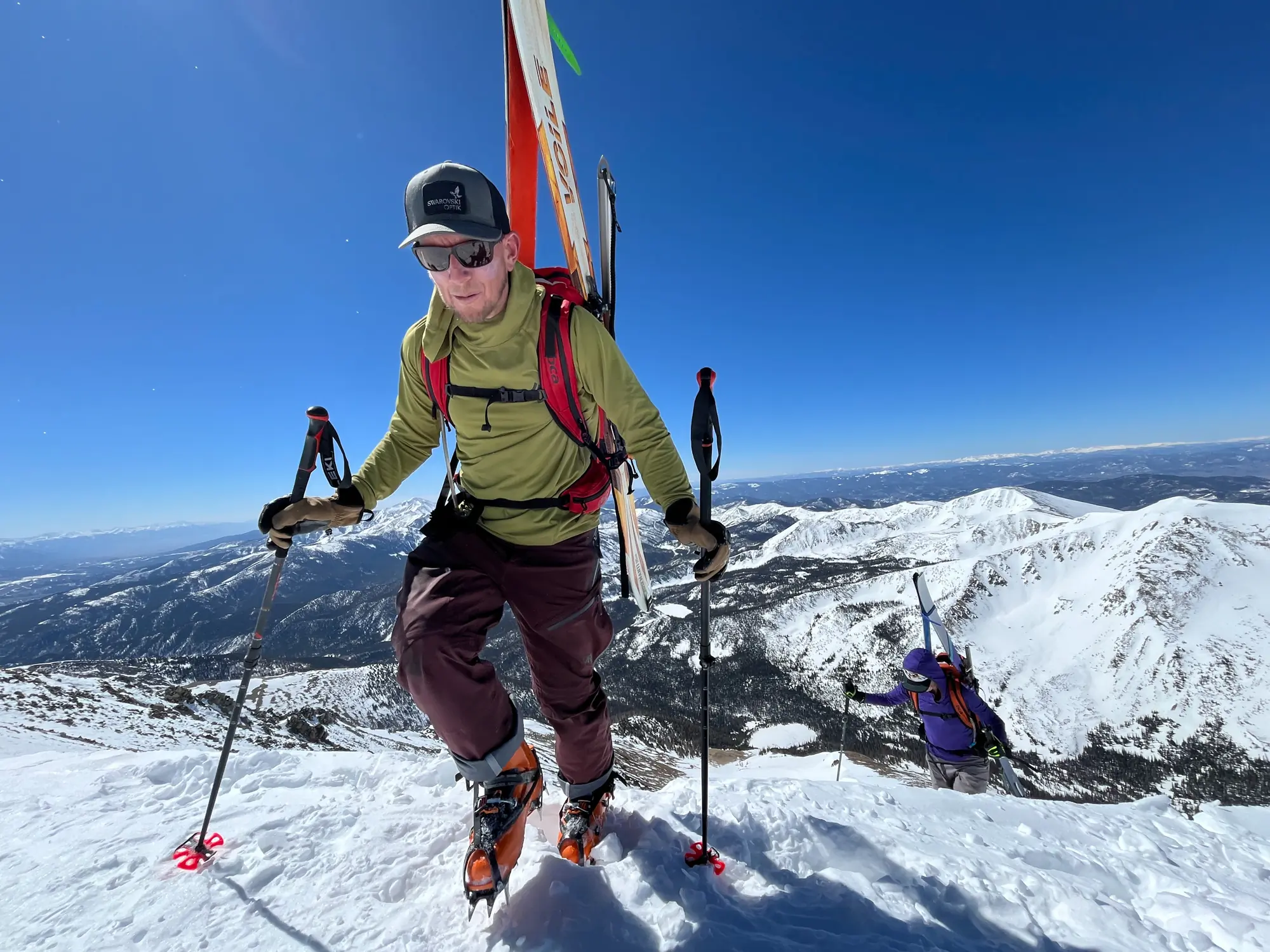

The Best Backcountry Ski Boots of 2025
We tested the best backcountry ski boots from Scarpa, Dynafit, Atomic, and more to help you find the best option for your needs and budget..


The Best Avalanche Beacons of 2025
We tested the best avalanche beacons from Arva, Black Diamond, Mammut, BCA, and more to help you find the best option for your needs and budget.

